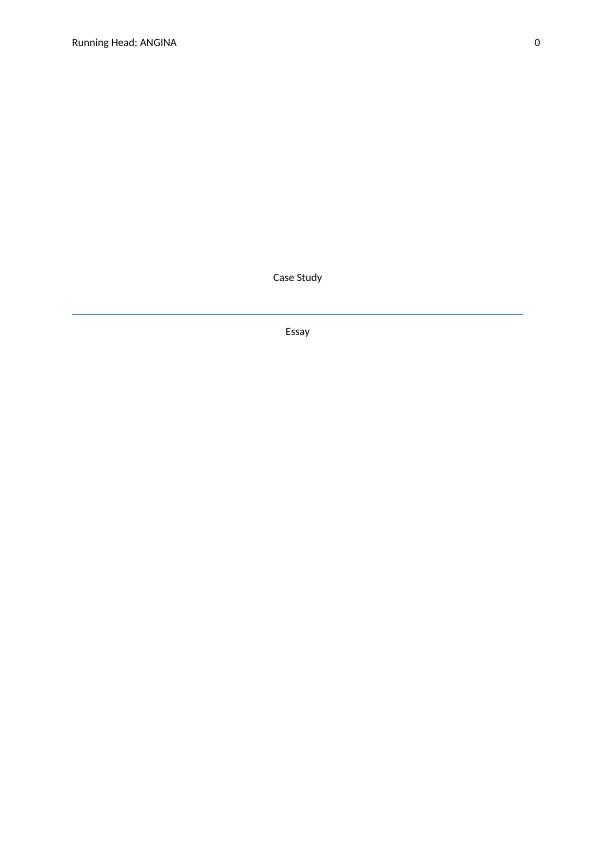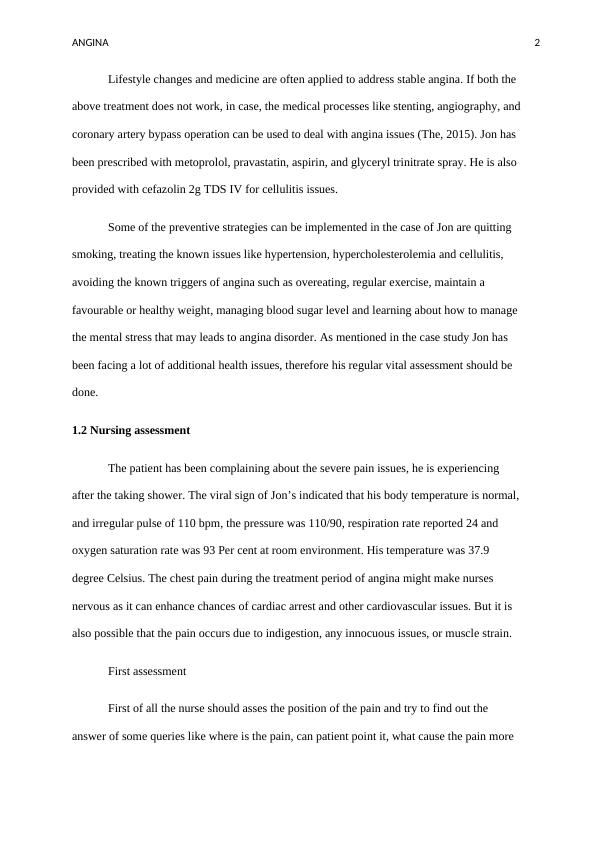Angina: Pathophysiology, Treatment, and Nursing Interventions
Develop the student’s ability to integrate theory into practical clinical knowledge through the use of a patient case scenario.
11 Pages2946 Words279 Views
Added on 2023-04-21
About This Document
This document provides an in-depth understanding of angina, including its pathophysiology, treatment options, and nursing interventions. It discusses the risk factors associated with angina and emphasizes the importance of lifestyle changes. The document also explores the role of sublingual glyceryl trinitrate and ECG in diagnosing and managing angina. It provides insights into nursing assessments and interventions for angina patients.
Angina: Pathophysiology, Treatment, and Nursing Interventions
Develop the student’s ability to integrate theory into practical clinical knowledge through the use of a patient case scenario.
Added on 2023-04-21
ShareRelated Documents
End of preview
Want to access all the pages? Upload your documents or become a member.
Angina pectoris: A case study
|14
|3062
|421
Analysis of Angina
|13
|2810
|479
Application of Clinical Reasoning Skills
|11
|2813
|40
Application of Clinical Reasoning Skills for Clinical Patient Scenario
|5
|1448
|21
A&P and Microbiology | Report
|5
|1007
|15
Pathophysiology and Pharmacology Applied to Nursing
|12
|2572
|447




